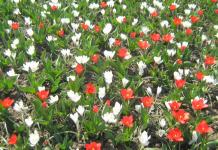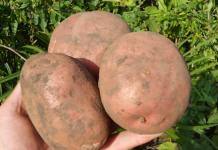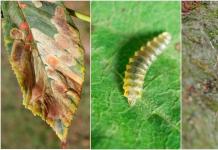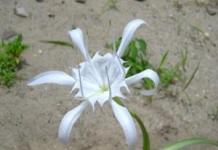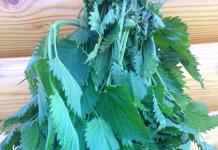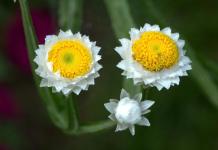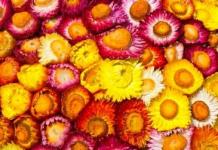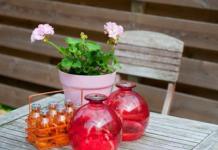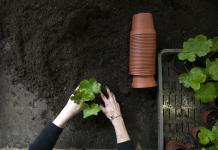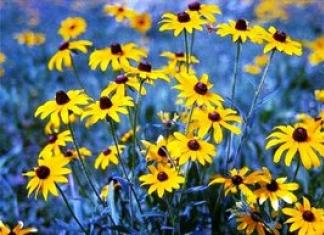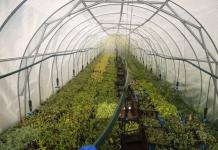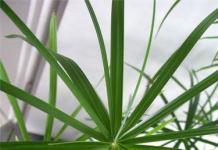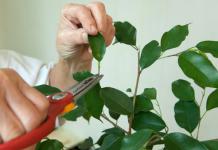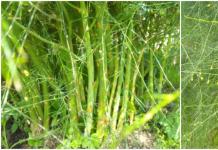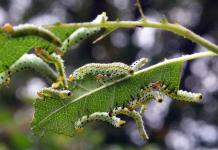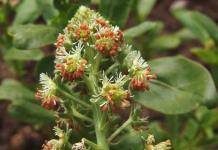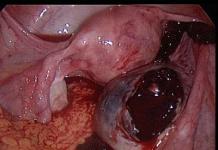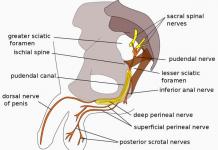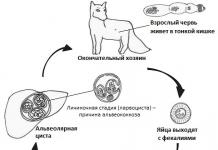
Pelargonium treats well, so it should be watered sparingly and the soil should not dry out. Although drought can tolerate normally.
But it is better not to plant it in the open sun either: the optimal temperature for growth and development in pelargonium is + 15 ° C, therefore the semi-sunny side is considered the best, or it will still have to be shaded.
Depending on the species, pelargonium has a number of individual characteristics, but the principle of planting and care is by and large the same. To root green cuttings in the garden, you need to plant them in a mixture of peat and river sand. But it can also be rooted at home using.
Pelargonium care
Dormant period
Once in the garden, pelargonium blooms all summer. But like any living organism, it gets tired, so let the plant rest for about 1.5-2 months until spring, put it at rest. To do this, do not water pelargonium and do not feed with mineral fertilizers. By spring, she will wake up and give flowering again. There are many opinions about the wintering of pelargonium. But I would not dare to leave it in the garden: for the winter, the bush must be transplanted into a pot and taken home.
Pelargonium should not be left in the garden for the winter. Potty her and take her home
Fertilizers
During the period of active pelargonium, use complex fertilizers for flowering plants.Pruning
In the spring, so that pelargonium actively starts to grow and pleases with abundant lush flowering, the tops of the shoots can be pinched. But the tops do not have to be thrown away, they can be rooted and new plants can be obtained.
The tops of the shoots need to be pinched so that next year the bush is lush
Reproduction of pelargonium
Pelargonium propagates by seeds and vegetatively (green cuttings).- Many hobbyists root the cuttings right in the winter, for this they plant the cuttings in sand or perlite and moisten them. Cuttings are cut from mother plants, wintering at home at a temperature not higher than + 12 ° C. The cuttings are rooted from January at + 16 ° C, already at this temperature the plant begins to give roots. Then the temperature is increased to + 20 ° C, the formation of a full-fledged root system of the cuttings takes about 3 weeks. When the root system is formed, transplant the young plants into small pots, take them to the greenhouse for hardening and growing. You can also grow on the window.

Pelargonium cuttings are usually rooted in perlite, but they root well even in water
- Seeds must be sown in containers also in winter, from December to February, the soil mixture should consist of river sand and peat or peat alone. It will take about 3 weeks to wait for seedlings, all this time the soil must be regularly moistened. It is advisable to cover the top of the container with a film. When the seedlings reach the phase of three true leaves, they are dived into separate containers. To make the plant more bushy, pinch it over the 6th leaf.
Types of pelargonium
The genus Pelargonium has about 250 species that grow in South Africa. In our country, the most widespread, which gave rise to many varieties and hybrids, are the item zonal and the item ivy-leaved.Our market will help you - an illustrated catalog of goods from different online stores.
Pelargonium Bulls Eye Cherry F1, 5 pcs.
165 rbl
seedspost.ru
Pelargonium Multibloom Pink F1, 5 pcs.
165 rbl
seedspost.ru
Pelargonium (geranium) Colors palette, Mix, 10 pcs. Farao
75 rbl
seedspost.ru
Pelargonium Knight Appleblossom F1, 4 pcs.
98 rbl
seedspost.ru
Pelargonium zonale
The contoured, patterned leaves of this perennial pelargonium can be light or dark green in color. In a number of well-known sources it is written that this species is annual, but I would say that it simply does not hibernate in the open field. I dig up and transplant it into a pot, so even in winter my pelargonium blooms.
In winter, mother liquors are stored at temperatures up to + 23 ° C. When the plant has faded, the shoots are cut to 10 cm and the container is transferred to a bright, cool room with a temperature not exceeding + 15 ° C. By the way, this species tolerates drought well, has many new interesting varieties and hybrids. Bright color (white, red, dark red, crimson, pink) and spherical umbellate inflorescences with simple or double flowers - that is why flower growers love this pelargonium so much. is able to decorate not only a window sill, but also hanging baskets, tubs and containers, flower beds, ridges or borders.
Pelargonium of this species does not tolerate excess moisture, can withstand temperatures down to -6 ° C, and at temperatures below + 9 ° C, the leaves turn yellow. Varieties and hybrids affect the height of the plant: for example, the variety "Meteor" it is distinguished by its short stature, therefore it is used for borders. And the series "Rocky Mountain" you can find vigorous varieties, and besides, unusual shades.
Medium-sized unusual varieties
- "Rumba Fire"- fiery, I would say, bordering on the "poisonous" saturation of red, attracts attention from any point of view.

- "Bravo Pastel"- petals of white color, smoothly turning into pink, with a delicate crimson eye

Pelargonium zone "Bravo Pastel"
Pelargonium ivy (Pelargonium peltatum)
A favorite of landscape designers for horizontal gardening. Juicy, fleshy leaves, sometimes framed with a red border, attract attention. They do not smell and do not have pubescence, but outwardly they are somewhat reminiscent of leaves in shape. Shoots of this species are falling, up to 90 cm long. Although they can be 30 cm, depending on the variety.
Pelargonium ivy "Apple Blossom Rosebud"
Again, many sources write about the one-year development cycle of this species, but transplant it into a pot in the fall, and it will live on the window until the spring planting back into the garden. It has a semi-shrub appearance. Flowers on long peduncles, gather in few-flowered thyroid inflorescences. They can be terry or semi-double. The color is white, pink, lilac and red.
Most popular varieties
- "Mustang"- deep dark red color.
- "Pygmy"- a relatively new series with salmon pink, cherry, pink flowers.

- "Red Pandora"- a variety of incomparable tulip pelargonium. Its cherry-red flowers will impress even an experienced gardener.

Pelargonium ivy "Red Pandora"
Meanwhile, many breeders subdivide ivy-leaved according to the strength of growth and ampelous colors. In the group of medium-sized varieties, there are many new lilac and lilac shades.

Pelargonium "Lady Ilchester"
Most varieties have fluffy double flowers and variegated colors.

Pelargonium "Richard Hogson"
Low-growing varieties and hybrids also have a lot of new and interesting things. Juicy bright colors and greens, coupled with a low height, are increasingly becoming a welcome guest in the garden. I love simple bright colors.
Variety "Belladonna" as if he had descended from retro pictures of the last century, their exquisite doubleness and tenderness of color scheme becomes a tidbit for a gourmet.

Pelargonium "Belladonna"
There are varieties whose flowers are distinguished by simplicity, but they contain the secret of color change from temperature. For example, flowers of the variety "Cascade White", bronze in heat and cold, under normal conditions become familiar orange colors.
Pelargonium ivy is more sensitive to frost than zonal. It starts to freeze out already at -4 ° C. When planting in the ground, the distance between the plants is taken to be about 25 cm, and if containers or boxes are used, then about 15 cm.

Pelargonium ivy
Finally, I want to say that in the West, gardeners have long been using ivy pelargonium for arched structures. A favorite technique is also a pyramidal structure: to create such an object, boxes are used, which, like steps, are placed on top of each other.

Do you have pelargonium growing?

Geranium or pelargonium has long and firmly occupied many windowsills as an unpretentious and beautiful plant. It can be grown at home and in flower beds: the flower looks great anywhere. It is recommended that you read how to care for geraniums at home before buying.
Geranium: general information
Its scientific name geranium - pelargonium - translated from Greek means "stork" or "crane"... The plant got this unusual name because of the fruit - as long as a bird's beak.
There are more than 400 types of geraniums in the world, which can be found almost all over the world, about 40 species are found on the territory of Russia. It is noteworthy that in Germany the geranium is called the "stork's nose", and in the USA and England - the crane.
It is a meadow annual or perennial plant that grows up to 60 cm. The leaves are soft, covered with hairs, have finger-lobed or finger-dissected forms. Large flowers have 5 regularly spaced flowers, usually collected in inflorescences. They can be terry and smooth, among the shades there are white, red, purple and blue.
Among the most popular types home geraniums are present:
In addition to "pure" varieties, there are a huge number of hybrids that you can grow yourself. Among domestic species, the name pelargonium is often found. They belong to the same geranium family, but differ in appearance... Despite this, caring for pelargonium at home, as well as for geranium, is almost the same.
How to care for geraniums
Home care for geraniums, photos of which are easy to find, have borne fruit, it is necessary comply with the basic conditions:
- Geranium feels great at room temperature: in summer it can fluctuate in the range of + 20-25 degrees, in winter it should not fall below + 10-14 degrees. It is better to choose a place away from drafts.
- But the flower is more capricious to light: the plant can even be left in direct sunlight, without fear of harm, since a lack of light leads to crumbling of leaves and flowers. The only thing that may be required is to turn the pot from time to time so that the plant forms from all sides. In winter, the lack of light is compensated by fluorescent lamps. If there is not enough light, the leaves will begin to fade rapidly.
- The simplest commercial universal soil is suitable for geraniums. You can cook it yourself by mixing 1 part of sod and foliage, one and a half parts of humus and half of the sand. Drainage must be placed at the bottom of the pot.
- The flower loves moisture and requires regular and frequent watering. In this case, the water should not stagnate in the pot or fall on the leaves. High humidity is also contraindicated. You can use standing water from the tap, rain and melt moisture are also suitable. In winter, it is required to reduce the frequency of watering in half, since the plant is dormant.
- A transplant is only required if the pot has become small. You should not choose large pots: geranium treats them badly and blooms profusely only in "cramped conditions". The optimal dimensions are: height 12 cm, diameter 12-15 cm.
- The plant is not demanding for complementary foods and is content with standard mineral fertilizers. They are brought in from March to September twice a month. You can also use specialized geranium fertilizers.
- To form a beautiful appearance, you can occasionally prune the upper and side branches, as well as remove dry leaves and flowers.
- Pelargonium propagation occurs by cuttings at any time of the year.
Correct transplant
 Geranium bad about the transplant, and therefore it is better not to change the pots more often 1-2 times a year. The reasons can be the following factors:
Geranium bad about the transplant, and therefore it is better not to change the pots more often 1-2 times a year. The reasons can be the following factors:
- The roots became cramped: you can check this by carefully pulling the geranium out of the pot;
- Due to excess moisture, the flower began to wither;
- Despite leaving, geranium does not develop and does not bloom;
- The roots were very bare.
Pelargonium is usually transplanted in the spring, from February to April, but this is not essential: you can transplant a plant even in winter, only the bush will take root longer. It is also not recommended to touch a flowering plant: it already spends a lot of energy on flowering and will not accept a new home well. Instead of replanting, you can renew the topsoil, adding fresh soil as needed.
Some gardeners, as additional care, transplant geraniums outside to the flower bed every spring, and in the fall they "take" it back. This helps to heal the plant itself, and at the same time split roots for propagation.
- It is necessary to prepare all the tools, and treat the pot with a bleach solution if it has already been used previously for another plant. This will avoid the transmission of the disease.
- Drainage is laid out at the bottom of the pot. These can be small stones or foam.
- Geranium is watered to keep the ground moist. Then you need to turn the pot over and carefully remove the plant from it, being careful not to break or damage the roots. You can tap lightly on the sides and bottom to separate the soil from the pot.
- The roots are examined, and if rot or signs of disease are found, they are carefully pruned.
- The flower is lowered into a pot and the empty places are covered with earth, lightly watered, compacted and more soil is added.
- After transplanting, geraniums are removed to a dark place for a week, then transferred to the designated place. After 2 months, you can add top dressing.
In a similar way, the plant is transplanted from the street in the fall before the onset of frost. If necessary, you can make gentle pruning... To do this, shorten all the shoots, leaving about 20 cm. The cut should pass a few millimeters from the node. During the winter, geraniums will not be able to give strong enough stems, and therefore pruning will have to be repeated in February-March.
Pelargonium can be propagated by seeds and cuttings: the first option is suitable for obtaining new varieties, the second for a new bush. Geranium can also be propagated by rhizomes, but waiting for this you need to have some experience.
Seed propagation
 It is possible to plant pelargonium seeds from the beginning of March, having previously treated the ground with a weak solution of potassium permanganate to protect against diseases. You can use purchased soil by adding sand and humus... Seeds are scattered over a loosened surface and lightly sprinkled with earth on top, then cover the container with a film to create a greenhouse effect and put away for several days in a warm place. When the sprouts are strong enough, they can be planted, after which standard care begins.
It is possible to plant pelargonium seeds from the beginning of March, having previously treated the ground with a weak solution of potassium permanganate to protect against diseases. You can use purchased soil by adding sand and humus... Seeds are scattered over a loosened surface and lightly sprinkled with earth on top, then cover the container with a film to create a greenhouse effect and put away for several days in a warm place. When the sprouts are strong enough, they can be planted, after which standard care begins.
Propagation by cuttings
The best time for propagation by cuttings is spring. A cut off stalk with 3-4 leaves (it is better to cut it off from the top) is placed in water and waited for the roots to grow. After the pelargonium is dried and buried in the ground.
Alarms
If the appearance of a geranium suddenly changes for the worse, do this you need to pay attention:
- With a lack of moisture, the leaves dry out and turn yellow, with an excess, they become lethargic and unnecessarily dull, gray rot appears on the stems;
- If the leaves, especially the lower ones, have begun to fall off, there is a lack of lighting;
- If the plant has stopped blooming, this indicates an overly large pot or lack of dormancy in winter.
Like any plant, geranium even after good care susceptible to pest attacks and diseases.

Output
Geranium is an unpretentious plant that even novice gardeners can handle at home. It does not require special growing conditions and frequent transplantation, easily tolerates direct sunlight and drought... The only thing to remember: geranium has a negative attitude to high humidity and systematic transfusions. In such conditions, she will quickly begin to wither and die.
Home geranium care


Real geranium is a garden plant. Indoor (it is sometimes called "kalachik", "crane" for its similarity to a crane's beak) is pelargonium. The most popular type of the geranium family, beloved by the people. Therefore, it is called home-grown geranium.
The article will use the words "pelargonium", "geranium", "crane", meaning pelargonium.
Views
 Geranium varieties
Geranium varieties
There are 250 varieties. Distinguish by the shape of the leaves, the color of the inflorescences.
Basic:
- royal
- zonal
- tulip
- unique
- variegated
- dwarf
- rosaceae
- fragrant
Royal
The flowers are large (6 cm). The color is speckled, contrasting. Along the edge of the petal there are corrugations, waves, just a line.
Zonal
Most popular for home use. The most unpretentious of her family.
The leaf plates are round, fragrant, wavy at the edges, with a brown border around. Without pinching, the height is 1 meter.
Flowers are simple, semi-double, double.
Tulip
Lush inflorescences resemble tulips, collected up to 38 pieces. Red, pink, white varieties.
Unique
The leaves are heavily dissected. Spicy aroma exudes. Blooms profusely. The petals are red.
Variegated
Decorative variety. The leaf plates are very beautiful, there are openwork, rounded, tricolor.
Dwarf
Height 13-28 cm. Blossom luxuriantly, abundantly, long. The bush is neat, without formation.
Rosaceae
Inflorescences are small roses, lush, 19 - 20 pieces.
Fragrant
Over 150 fragrant varieties.
PECULIARITY... Each has its own aroma: apple, lemon, cinnamon, rose, strawberry.
The smell kills germs. Used for the production of essential oils.
Care after purchase
 Geranium from the store
Geranium from the store
The purchased plant has undergone several stresses: nursery, transportation, transshipment base, warehouse, shop, apartment. Therefore, until the moment of adaptation to new conditions (3 weeks), it must not be touched. \
You should take good care of: maintain the temperature, soil moisture, air. Treat with the drug Fitosporin.
When the habituation period has passed, you can transplant.
Growing conditions
Temperature
Optimal: +23 degrees in summer, +15 in winter.
Air humidity
It tolerates dry air well. Humidity is the same. It is impossible to spray.
Lighting
Abundant flowering is provided by good lighting. Otherwise, the bush stretches out, there are few flowers, they quickly fall off.
Choosing where to put
Pelargonium is photophilous. It is necessary to choose sunny windowsills.
No drafts and low temperatures.
 Geranium on the windowsill
Geranium on the windowsill
- A white, purple crane is placed anywhere in the room. Red - closer to the window: from the evil eye.
- The positive magical properties are enhanced by the proximity to the azalea or the Decembrist cactus.
- In summer, it can be placed on both sides of the porch, in front of the windows. Will be home decoration. Will bring a good mood to the hosts and guests.
- Astrologers believe that geranium is more energetic for Aries. Soothes Pisces, Scorpions, Aquarius. For the rest of the signs, it is a talisman.
What it looks like in the interior
This flower will decorate any interior, give it more freshness. There is a popular belief that geranium is a talisman at home.
Care at different times of the year
In the spring
From the first days of March, it is necessary to prune: remove old, drying shoots, thin out thickened areas. Remove autumn branches that have grown over the winter with one stem, leaving four points of growth. New ones will soon grow. After 5 weeks, the bush will be covered with many magnificent inflorescences.
Trimmed cuttings will take root perfectly.
IMPORTANT. After cutting, good lighting is needed as much as possible. Put it right by the sunny window. It is good to apply a growth stimulant. Spray the buds 2 times a week.
Having cut off, transplanted.
Summer
Water regularly, feed. Remove wilted inflorescences, pinch, trim. If the rains are lingering, pelargonium, taken out under the open sky, is returned home.
In autumn
At the end of September, flowers are brought home.
The main task is to prepare for the winter. Water a little, regularly. Fertilize once in three weeks.
Pelargonium begins to bloom less: it prepares for pre-winter pruning. The cut stems are used for propagation.
Winter care
 Geranium in winter
Geranium in winter
They stop feeding, water less, provide a temperature of +14 degrees. But the illumination must be sufficient. It is good to use special lamps. Optimally placed near the southern windows.
ATTENTION. You cannot trim.
How to care during flowering
To bloom, you need small containers. When the roots fill the pot, the crane begins to give strength to the blooming of the buds.
The soil mixture should be chosen directly for flowering plants.
Care - regular feeding. Especially potash fertilizers.
Nitrogen is sometimes desirable. An excellent fertilizer is sold special mixtures, where there is an additional content of copper, manganese, iron.
Organic matter cannot be used. You can hurt.
Water abundantly, but rarely.
If you provide sufficient lighting, the crane will delight as long as possible: March - December.
IMPORTANT. When it blooms, it is forbidden to cut, pinch: the formation of buds is disturbed.
How to care after flowering
PECULIARITY. Winter is a dormant period.
You need to prepare for your winter vacation.
Put in a cool, well-lit room, where +11 degrees. Avoid drafts.
After a couple of weeks, bring it into the room.
Prune immediately after the last blooming bud. New shoots will appear. By the spring, a lush bush will form, magnificent inflorescences will appear.
After this procedure, add a complex fertilizer mixture.
CAREFULLY. Pelargonium does not tolerate fresh organic matter.
Can I grow in the garden?
It is a thermophilic plant. Therefore, it is planted under the open sky in the summer.
Determined with the time of planting: the first half of May. The soil temperature should rise to 17 degrees.
 Geranium in the flowerbed
Geranium in the flowerbed
Choose a well-prepared, loose, drained soil. They also use a commercially available universal.
Seedlings are being prepared.
Make holes. Deeper than the length of the roots by 25 cm. The bottom is covered with drainage (gravel, broken brick). Above - a mixture of peat, humus sand.
Then pour over, mulch with dry peat.
REFERENCE. Several bushes should be planted in islands. Between them 25 cm.
Care: watering, feeding, pruning.
Before the onset of frost (better earlier), they dig it up, place it at home by the windows.
With the arrival of a warm time, they are again taken out of the dwelling. Such a transplant is not necessary. Geranium can constantly grow at home
Signs of improper care
Faded foliage signals improper care.
- Insufficient sunlight.
- Improper hydration
- Failure to comply with the temperature regime.
- Uncomfortable humidity.
- Unsuitable container.
- Lack of dressing.
These factors are the causes of the appearance of diseases, pests.
Transfer
The best transplant period is the waxing moon phase. The procedure is carried out in the spring every two years.
An appropriate pot is prepared. The bottom is covered with drainage, you can use small pebbles. Then a bush is placed, the container is filled with moistened soil, watered. Shaded.
 Geranium transplant
Geranium transplant
After a week, it is transferred to a permanent place. Top dressing begins when two months have passed.
Landing
For planting, a container is selected that has drainage holes 24 cm deep from below.
Wash the pot, rinse with a weak solution of potassium permanganate.
The soil should be loose, dry quickly.
For a successful planting, pour a layer of expanded clay, on top - sand, earth. Make a deepening. Place the seedling. Cover with soil mixture, water.
Reproduction
It is easiest to propagate by cuttings. In a strong bush, the top with three leaves is cut off. The cut is sprinkled with activated carbon, planted in the intended place.
Before this, the soil is spilled with boiling water, then with potassium permanganate, with a pink solution.
Another way: the stalk is placed in water. When the roots appear, they are moved into place.
Division method: the bush is divided during transplantation. A separate container is prepared for each part.
Seed propagation is more laborious. Sowing time is January. The place of sowing seeds is small cups. The seeds are laid out, sprinkled with soil, covered with transparent material. Are watered by drip.
 Geranium propagation
Geranium propagation
After the emergence of two leaves on the shoots, they dive. After 7 weeks, they are seated in places.
Pruning
The main task is to thin out the crown. Ventilation will improve, more moisture and sunlight will get in.
All shoots directed inward are removed.
A lush, long flowering is achieved.
The knife for this procedure is disinfected with an antibacterial agent. Hands are also rubbed with alcohol. The stems are cut at the leaf nodule. Sprinkle the cut with cinnamon powder or activated carbon. Then they are fed with a nitrogen-containing fertilizer.
Rejuvenation
Produced in two ways:
- Radical - cut, root cuttings.
- Gentle - spring pruning.
The tops are used for grafting. Cut off 6 cm, sprinkle with activated charcoal. Dried for 3 hours, planted.
Pruning is carried out immediately after the winter rest. The order was discussed earlier.
Does the plant have a dormant period?
Winter is a dormant period. From October to March, abundant moisture stops, most of the greenery is cut off, and the temperature remains cool.
Watering and other water procedures
It is watered all year round with clean water. Better melt or rainwater. The tap water is cleaned of various impurities, filtered.
Water hardness can be softened:
- Wood ash: liter of water - 10 grams
- Fresh peat: a liter of water - 15 grams
- Oxalic acid: bucket - 0.3 grams
Temperatures in spring and summer should be slightly warmer than room temperature. It is slightly cooler in autumn and winter. In this case, the crown should be protected from moisture.
 Watering geranium
Watering geranium
Moderate, regular hydration should be maintained. Sharp fluctuations in abundant watering and drought negatively affect the condition of the crane.
In the summer, watered daily. In the fall, the frequency of watering decreases. Until spring - the beginning of a new flowering season.
It is impossible to spray.
For watering to be effective, you should choose a pot that matches the volume of the root system. Optimal: height - 15 cm, diameter - 25 cm.
It is better to buy clay: plastic ones retain moisture, the roots rot.
Once a week, it is necessary to stimulate growth, strengthen the roots: water with a solution of iodine (liter of water - 1 drop).
With prolonged bad weather, watering is reduced. In drought, increase.
Errors:
- There are no holes in the planting pots to remove excess moisture.
- From autumn to spring, frequent, abundant watering continues.
- A sharp fluctuation in watering from abundant, frequent to scarce, rare.
Top dressing
Produced in spring - summer. Twice every month. First shade (if it is under the sun for a long time), then water, fertilize.
One-component dressings are used: phosphorus, nitrogen, iodine, potassium.
You can use complex, where various minerals are present.
Fertilizer mixtures are introduced according to the attached instructions.
REFERENCE. Organic matter is applied once every three years, being careful. Otherwise, the plant may die.
Diseases and pests.
 Geranium diseases
Geranium diseases
Diseases
Fungus
Covered with down, gray spots. The reason is excess moisture.
It should be cleaned of dead areas, treated with fungicides.
Roots rot
From infection by a fungus. The leaf plates turn yellow, then turn black, the flowers are covered with a cobweb.
It is necessary to loosen the soil, exclude nitrogen fertilizers, remove diseased parts, apply fungicides.
Rust
The leaf plates are covered with rusty yellow spots. Rot, blackness appears.
ATTENTION. It is treated effectively until blackening appears.
Dead fragments are removed, treated with fungicides.
Chlorosis
There is a lack of mineral fertilizers.
The border of the leaf plates has brightened - there is not enough nitrogen.
The whole plant turns yellow - sulfur deficiency. Old leaves are covered with spots - there is not enough magnesium. If new - lack of iron. The absence of phosphorus is indicated by a yellow spot
Treatment is a balanced compound fertilizer.
Blackleg
The disease is fungal. The stem is affected. The reason is heavy soil.
It is useless to treat.
Late blight
The leaf plates curl up, wither. When a disease is detected, it is already useless to treat.
Prevention is done with drugs "Ridomil", "Previkur".
The buds wither
Not enough phosphorus, boron. The reason may be dry air, heat.
It is necessary to make foliar feeding, create an optimal temperature - 18 degrees, moderate moisture.
CAREFULLY. Do not abuse nitrogen. Otherwise, there will be no inflorescences.
Pests
Aphid
It multiplies quickly. Drinks juice: the leaves curl, dry up.
Affected fragments must be removed, processed Fitoverm.
Spider mite
Signs: cobweb, white dots on the leaf plates.
Apply drugs Fitoverm, Akarin.
Nematode
Small worms eat the roots. Processing something is useless. Destroy the soil, the plant.
How to reanimate?
When it dries up completely, you must:
- Examine the bush. If saving a live trunk, remove for the winter: find a cool place. New stems may appear in the spring.
- If the trunk is also dry, dig out the root, soak it. He can give roots.
- Plant.
Prophylaxis
- Timely transplant
- Suitable pots
- Moderate hydration
- Draft protection
- Correct feeding
- Destruction of pests
- Timely removal of yellow leaves.
By carrying out competent prevention, any disease can be cured.
Useful and harmful properties
 Geranium oil
Geranium oil
Benefit
The scent of the leaves disinfects the air. Disease-causing bacteria are destroyed.
Home energy improves. Serves as a talisman against negative emotions.
Leaves, juice, stems are used to treat: colds, calming the nervous system. Treat headache, blood pressure, gastrointestinal tract, throat ailments, runny nose, toothache, ear pain. Promotes the removal of kidney stones, elimination of pain in the spine, joints. They help to quickly fall asleep, heal burns.
Juice, oil, broth are widely used in cosmetology.
Essential oil improves health, normalizes acidity, and improves digestion. Eases neurological pain. Used in the treatment of lupus, sclerosis.
When applying, it is imperative to dilute with olive oil, sesame oil.
Harm, contraindications
The most common problem is allergies. Manifested by headache, cough, swelling, nasal congestion. If this happens, you need to get rid of the geranium.
Medicines prepared on its basis are contraindicated for: increased blood viscosity, low blood pressure, stomach ulcer, individual intolerance. Cannot be used by children under 3 years old, pregnant women, elderly people.
Frequent mistakes
 Geranium inflorescences
Geranium inflorescences
- The main mistake is the lack of lighting. It should be kept by the window, where there is a lot of sun. In summer, you can sit on the balcony. Otherwise, the beauty of the pet becomes extinct, loses its splendor, brightness.
- Incorrect pot size.
- Overfed with nitrogen. Only one green mass grows. It is better to fertilize with a universal mixture.
- Lack of rest period from December to February. Winter care needed. You cannot trim.
- Lack of formation. It is imperative to do pruning, pinching in the spring. Otherwise, a huge bush with crooked half-naked stems will grow.
- Low (less than 10 degrees) temperature. Optimal - 18 degrees
- Excessive moisture. There is no drainage. Roots rot
- Insufficient moisture. Leaves dry around the edges
- Depleted soil. It is necessary to replant every 3 years
Question answer
Question. If hot tap water is diluted with cold water, will it be irrigated?
Answer. Their chemical composition is identical. If it is soft, then you can use it.
Question. The geranium is dry. How to recover?
Answer. It is necessary to fill the container with warm water for 10 minutes until air bubbles are released.
Question. How is air humidity maintained?
Answer. Put the container and water. Or use a special humidifier.
Question. What is the best material for planting drainage?
Answer. Broken brick, small stones, expanded clay.
Useful video
Find out more about caring for geraniums in the video below:
Output
The beauty of pelargonium does not bring much trouble. But the house fills with positive energy, tranquility and strength. Every dwelling should have such a modest, but reliable and strong crane.
Geraniums are unpretentious and willingly flowering plants. And yet, if geranium appears, home care becomes the key to the duration of its flowering. It depends only on the care of the grower how long the external attractiveness of the plant will remain, how lush and bright the inflorescences will be.
For two hundred years of cultivation as indoor plants, geraniums have firmly entered the life of Russians. Pink, scarlet, white and variegated umbrella inflorescences of pelargoniums or geraniums can be seen on the windows of city apartments, in summer cottages and on the verandas of rural houses. The flower, which has become truly popular, is in fact a native of South Africa, for whom Russian conditions are not always comfortable.
In nature, wild geraniums are perennials:
- with powerful, weakly branching shoots;
- with smooth or slightly pubescent split leaves;
- with umbellate inflorescences, in which up to 20 individual flowers are collected.
The culture is valued for the massiveness and duration of flowering, which, with proper care for geraniums at home, lasts from spring to pre-winter. At the same time, many species are quite fragrant, and the docile nature of the plant is its great advantage.
In conditions of home keeping, decorative varieties of geraniums retain their decorative effect for at least 4–5 years. But properly organized care helps to extend the life of a flowering specimen up to ten years or more. How to care for a geranium so that it blooms, remains attractive and healthy for a long time?
Growing conditions and care features so that geraniums bloom
Geranium feels best in well-lit places and only on the hottest days requires light shading from the sun's rays. If the pot is exposed to the north window or turns out to be in the back of the room, the grower should expect that, with a lack of lighting, the shoots will stretch out, the plant will lose its compactness and decorative effect.
How to care for geraniums at home if there is no way to bring it out into the light, or a lack of lighting threatens the plant in winter? In winter, when keeping on a loggia or on northern windows, it is useful to use special ones. Extending daylight hours to 12-14 hours has a good effect:
- to preserve the shape of the bush;
- on the uniformity of growth of shoots and their quality.
In geranium bushes that receive enough light, the newly formed stems have a rich color. The same applies to foliage, which does not become smaller or paler, but remains juicy and bright.
 In order for geraniums to bloom, caring for it necessarily involves maintaining a temperature in the room that is comfortable for the culture. It is best if the air in the room where the pot stands:
In order for geraniums to bloom, caring for it necessarily involves maintaining a temperature in the room that is comfortable for the culture. It is best if the air in the room where the pot stands:
- in summer it is warmed up to 22-27 ° C;
- in winter, during the dormant period, it has a temperature of about 12-16 ° C.
Plants are good for airing, but like other indoor crops, they do not like cold drafts. Being next to hot radiators, geraniums will also experience discomfort.
Watering and feeding indoor geraniums for home care
 Geranium can do without spraying or additional humidification, but it takes these procedures well. If irrigation of foliage is included in the care of geraniums, as in the photo, at home, then this should be done with warm water, filtered or previously settled. Otherwise, unsightly stains from salt stains will appear on the bright foliage of the plant.
Geranium can do without spraying or additional humidification, but it takes these procedures well. If irrigation of foliage is included in the care of geraniums, as in the photo, at home, then this should be done with warm water, filtered or previously settled. Otherwise, unsightly stains from salt stains will appear on the bright foliage of the plant.
As the main care measure for geraniums, it should be abundant and regular. In the summer, it is important to moisten the soil under the bush as soon as signs of dryness of the earthen coma appear. In winter, the intensity of watering is much less. On average, plants are watered more than once every 7-10 days. In this case, the soil should not dry out completely. If the leaves turn yellow on the bush, caring for geraniums at home should be reviewed. Obviously, the plant does not receive enough water, or the roots, feeling an excess of moisture, began to rot.
Geraniums are fast-growing crops that require not only watering, but also the replacement of nutrients selected from the soil. Plant feeding is carried out from March to August, that is, in the midst of active growth and flowering.
To maintain the splendor of the inflorescences, they are used with which geraniums are fed twice a month. If a complex composition is chosen as a top dressing, it is better to give preference to the one where there are the least nitrogen compounds. This element contributes to the growth of green mass, and the growing foliage inhibits the formation and opening of buds.
Geranium pruning and home care in winter and spring
 And for experienced flower growers, and even for beginners, caring for geraniums at home will not seem difficult and time-consuming. But one operation always raises a lot of concerns - this is pruning.
And for experienced flower growers, and even for beginners, caring for geraniums at home will not seem difficult and time-consuming. But one operation always raises a lot of concerns - this is pruning.
The growth rate of geraniums depends on the species and variety. But in all varieties, as the length of the stem increases, the lower leaves gradually wither and fall off. The greens remain only at the very tops. Inflorescences are also formed here.
As a result, if the shoots are not shortened in time, the geranium turns into a shapeless voluminous bush completely devoid of any attractiveness. To prevent this from happening, in the fall, when the appearance of new flowers stops, geraniums are cut off.
The stronger the pruning included in the care of geraniums at home will be:
- the more new shoots should be expected next spring;
- the greener and thicker the crown of the plant will turn out;
- the more abundant and longer flowering will be.
There are dormant buds on bare stems, so you should not be afraid of deep pruning. Moreover, the growth of geraniums continues even in winter, and some particularly "nimble" plants have to be formed again, but already at the end of February or in the first days of March, until the active growing season begins. Especially important is pruning to zonal geraniums, which are most often found on the windowsills of amateur flower growers. The royal varieties have a slightly different agricultural technique, so such plants are formed more accurately and only in the second year after planting.
In winter, pruning geraniums when leaving at home is better not to be carried out, since from December to early February the plant has a dormant period, its defenses and metabolic processes are weakened. Shoots cut off at this time are unsuitable for rooting.
The tops cut from the shoots are not thrown away. It is an excellent material for plant propagation and new flowering geraniums. With this method, all parental characteristics are completely preserved in young specimens, and the first flowering is already possible in the first summer after rooting. 
In the summer, so that the wilting inflorescences do not drag off the food for themselves, they are carefully cut off.
Transplanting geraniums for home care and taking plants to the garden
 How to care for a geranium flower at home, if the roots of the plant are completely entwined with a lump, there is little soil left in the pot and a large bush will noticeably wither soon after watering?
How to care for a geranium flower at home, if the roots of the plant are completely entwined with a lump, there is little soil left in the pot and a large bush will noticeably wither soon after watering?
In this case, you cannot do without a transplant, which is a real stress for geraniums, as for other domestic plants. It is necessary to transfer the green pet to a new pot carefully, without disturbing the existing earthen coma, and no more than once every two years. Every year you can only add a little fresh substrate.
In order for the flowering of geraniums to be long and abundant, the plant developed well and gave new shoots, you need:
- loose soil rich in nutrients;
- powerful drainage;
- a small pot, with approximately the same depth and width.
As a substrate, they use ready-made soil for decorative indoor crops, to which they add a little sand and humus, or make a mixture of equal parts of humus, peat, turf and sand.
If the plant is taken out into the garden for the summer, then it is better not to take it out of its usual container even here. This will help avoid:
And when in the fall, before the onset of cold weather, geraniums are taken back into the room, you cannot immediately put them on the usual window sills to other crops. To ensure the health of the plants and the absence of pests, geraniums are quarantined for a month, and in case of alarming symptoms, they are treated with fungicides and insecticides.
We grow a beautiful, not capricious geranium - video
Pelargonium home (indoor), which many mistakenly call geraniums, is one of the most common indoor flowers.
It was brought to Russia in the 18th century and remains popular to this day. Active growth, long flowering and unpretentious care have won the love of flower growers pelargonium.
How geranium differs from pelargonium
The confusion with the names occurred back in the 18th century, when scientists mistakenly combined plants into one group. Both belong to the Geranium family, but belong to different genera with corresponding names.
The genus Geranium is the most numerous, it includes over 400 species, while the genus Pelargonium is more popular.
The main difference between these two plants is in their origin, which has an impact on frost resistance. The heat-loving pelargonium is native to South Africa. Indoor flowers in the open field die in winter.
Geranium is considered the birthplace of the Northern Hemisphere, therefore it is more cold-resistant, and its varieties can grow in natural conditions.
One of the features that unite and confuse the classification is the similar appearance of the fruit capsule. After fertilization, the pistil stretches out and looks a bit like the beak of a stork or crane.
Hence the names of plants - Pelargos translated from Greek means "stork", geranios - crane. Geranium is often called a crane.
The external differences are quite noticeable. Geranium looks more like a wildflower. The petals have the correct symmetry, the flower contains 5 or 8. The flowers are often solitary, rarely gather in inflorescences.
Her pampered "relative" has symmetry of petals along only one axis. Flowers are collected in large inflorescences, among the many shades there is no blue. On the contrary, geraniums are dominated by blue, purple shades, and red ones are not found.

Three varieties of indoor geranium
There are about 250 species in the genus. Some of them are cultivated on plantations to obtain fragrant geranium oil - a substitute for rose essential raw materials.
In indoor floriculture, three types are most popular:
1. Royal grandiflorum(specks of a different color on large petals, most often purple or pink);
2. Zonal(on round leaves, belts of a different color are located in zones - bronze, yellow, reddish).
3. Ivy(leaves like ivy, grows in the form of an ampelous plant, pink flowers).
At home, more often than others, a zonal species is grown, characterized by a long flowering period - from spring to autumn. Royal pelargonium blooms until the end of the years. Ivy is cultivated less often than other species.

Growing and care
Pelargonium is not a capricious plant. Even with minimal knowledge of floriculture, this beautiful indoor flower can be grown on the windowsill.
The most important thing that he needs for flowering is a lot of light, good watering, fertilization... Do not forget that the plant needs a dormant period from about November to February.
The best wintering conditions are a sunny, cool place and minimal watering. Having gone into hibernation at the beginning of winter, the flower will develop normally in spring.
The soil
Geranium loves a fertile substrate, which includes sod and leafy soil, with the addition of a small part of river sand and peat. Ready-made soil suitable for flowering plants.

Lighting
All pelargonium species prefer well-lit areas. Plants of a zonal species planted in the open ground for the summer period perfectly tolerate even direct sun, wind and rain.
The royal species is more picky about atmospheric influences, therefore, in the summer, its representatives should be placed in protected places - on terraces, balconies.
Although geraniums love the sun, it can overheat when exposed to direct sunlight through glass due to poor ventilation. In such cases, shading is required.
With a lack of light, the plant will begin to turn yellow and die off the leaves, the stem will be exposed, the buds will not be tied.
Temperature regime
Moderate warmth up to 23 ° C is preferred during flowering.
With a steady decrease in temperature to 12 ° C and heat above 30 ° C, pelargonium ceases to bloom. In autumn, the temperature of the content is lowered, watering is reduced.
In conditions of short daylight hours, the plant should not be active, otherwise the shoots will stretch.

Winter care
Cool conditions suitable for wintering geraniums can be created on a glazed loggia.
Optimal positive temperatures are 12-15 ° C during the day and not lower than 6 ° C at night. Some varieties are recommended to be kept at higher temperatures.
Watering and humidity
Pelargoniums tolerate drought well, and at the same time are susceptible to fungal diseases resulting from excessive waterlogging. Therefore, it is better to underfill a little than to water it in excess.
In the summer, watered after the top layer dries. In winter, watering is significantly reduced, but make sure that the earthen lump in the pot does not dry out completely.
Air humidity does not play a special role, spraying is not necessary. With excessive dampness and stagnant air, fungal infections are possible.
Fertilizers
During growth and flowering, top dressing is especially relevant. During the winter rest period, fertilization is stopped.
Starting in spring, they are introduced with each watering in small doses, or after two weeks in a normal dose on wet soil.
After rooting the cuttings, fertilizing with a high nitrogen content is used, before and during flowering - with a predominance of potassium.
With improper care, the plant stretches, the shoots become bare, the flowering rate decreases, the buds fall off.
What mistakes can be:
incorrectly selected temperature regime;
lack of lighting;
fertilizers of inharmonious composition;
untimely transplant;
illiterate pruning;
the presence of pests.
In pest control they use Fitoverm... The drug is diluted according to the instructions, the leaves are sprayed, the ground is watered.

Transplant and reproduction
Even the most beautiful geranium bush loses its decorative effect in a few years.
Its renewal is required with the simultaneous receipt of cuttings.
This method of reproduction can be used during the entire growing season, but still in early spring, when there is active sap flow, the productivity is higher.
How to deal with an old plant
In the spring, rejuvenating pruning is carried out, non-viable dry shoots are removed, long lashes are shortened. Each shoot left should have 2-5 buds.
Thus, they form a uniform crown and stimulate further flowering. Places of cuts are treated with charcoal to avoid stem rot.
Apical cuttings or pieces of shoots are taken from a healthy mother plant for further propagation.
Old leaves on the mother bush are not immediately removed. They are cut as new shoots grow. When young shoots grow 8-10 leaves, pinch the tops.
Propagation using cuttings
Cutting is the most effective way of reproduction of pelargoniums - with almost 100% survival rate and guaranteed retention of varietal traits.
The cuttings are dipped in wood ash and left to dry. For better survival, before planting, you can moisten the slices first in water, then in Kornevin... This is done with cuttings of zonal and royal pelargonium.
Experienced flower growers recommend planting cuttings of ampelous pelargonium without preliminary preparation. From the lignified uterine branches, the tops are broken off by hand, trying to leave a piece of bark on the process 4-5 cm long.
The lower leaves and stipules are removed, after which the cutting is planted in pots with a mixture containing lowland peat and 10% perlite.
Water in moderation, the next watering is carried out after two weeks. After the roots appear, young plants are transplanted into another substrate.


